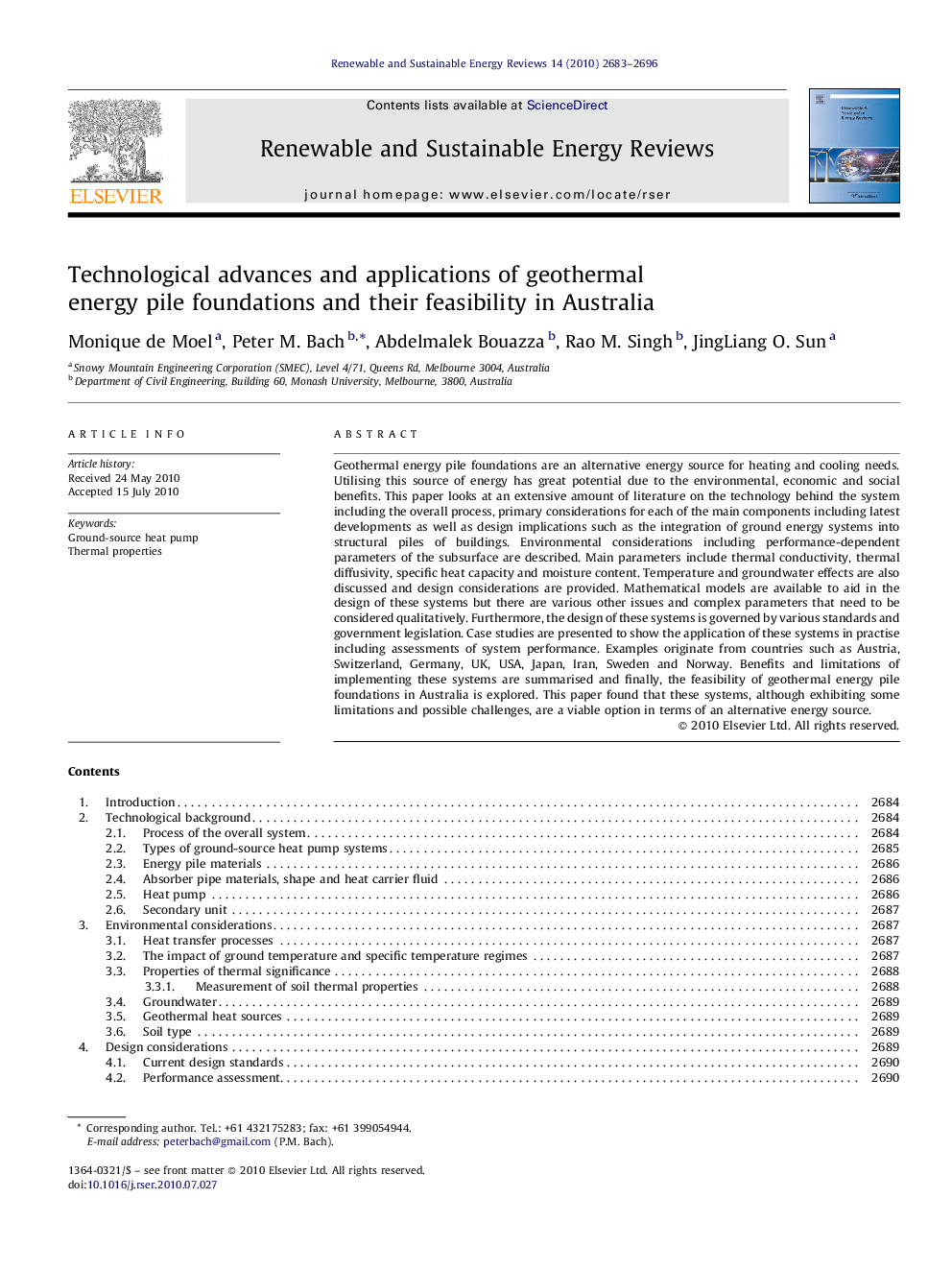| Article ID | Journal | Published Year | Pages | File Type |
|---|---|---|---|---|
| 1751666 | Renewable and Sustainable Energy Reviews | 2010 | 14 Pages |
Geothermal energy pile foundations are an alternative energy source for heating and cooling needs. Utilising this source of energy has great potential due to the environmental, economic and social benefits. This paper looks at an extensive amount of literature on the technology behind the system including the overall process, primary considerations for each of the main components including latest developments as well as design implications such as the integration of ground energy systems into structural piles of buildings. Environmental considerations including performance-dependent parameters of the subsurface are described. Main parameters include thermal conductivity, thermal diffusivity, specific heat capacity and moisture content. Temperature and groundwater effects are also discussed and design considerations are provided. Mathematical models are available to aid in the design of these systems but there are various other issues and complex parameters that need to be considered qualitatively. Furthermore, the design of these systems is governed by various standards and government legislation. Case studies are presented to show the application of these systems in practise including assessments of system performance. Examples originate from countries such as Austria, Switzerland, Germany, UK, USA, Japan, Iran, Sweden and Norway. Benefits and limitations of implementing these systems are summarised and finally, the feasibility of geothermal energy pile foundations in Australia is explored. This paper found that these systems, although exhibiting some limitations and possible challenges, are a viable option in terms of an alternative energy source.
